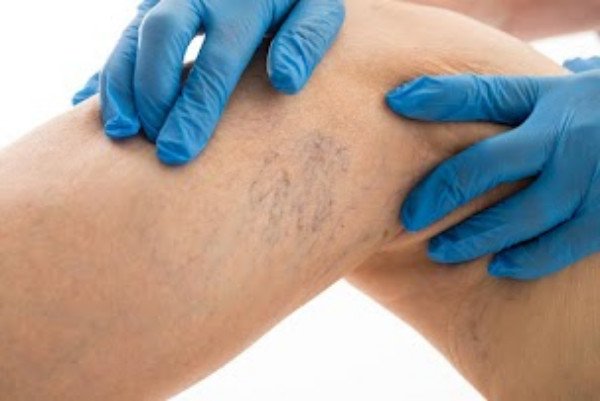Understanding the complexities of medical procedures often gives us peace of mind during health complications and while we look at vascular health, let’s shed some light on treatment processes, particularly Sclerotherapy for Varicose Veins.
As patients who have not studied medicine, we often do not fully comprehend the treatments and procedures explained to us. This can leave people feeling confused and unnecessarily anxious about an upcoming procedure as they are not sure what it involves, what the risks are, and what the recovery will be like.
Sclerotherapy for varicose veins is a straightforward procedure that does not need to cause unnecessary concern among patients. Below are the preparation requirements, potential complications, procedure details, and recovery expectations for sclerotherapy for varicose veins.
Preparation for the Procedure
Prior to the treatment, patients should shower and thoroughly cleanse their legs with soap.
On the day of the procedure, avoid shaving or using depilatories on legs, do not apply lotion, and be sure to bring heavy, thigh-high compression stockings for post-treatment wear. Loose-fitting shorts should be worn during the treatment session.
Possible Complications
Sclerotherapy is a simple and safe procedure. However, as with any procedure, there are always some risks and possible side effects. Some possible complications include:
· Stinging or pain at the sites of injection
· Swelling of the ankles or feet, or muscle cramps
· Red, raised areas at the injection sites, like hives but should disappear within a day or two.
· Brown lines or spots on the skin at the injection sites. This can be a result when blood escapes from treated veins. These dark areas occur more often in patients who have larger veins or patients who tan easily. They can disappear on their own but may not.
· Groups of fine red blood vessels near the injection sites of larger vessels. Most disappear by themselves while some require additional injection treatments or laser therapy.
· Small, painful ulcers at treatment sites, which may develop immediately following treatment or after a few days. These occur when some of the solution escapes into the surrounding skin or enters a small artery at the treatment site. This is a rare complication.
· Although allergic reactions to sclerosing solutions are uncommon, they can happen.
· Inflammation of treated blood vessels. This is a common side effect and can be treated with medications such as aspirin, compression, or heat.
· Lumps in injected vessels. Lumps are caused by coagulated blood. They are not dangerous and may be drained a few weeks after injection.
The Procedure
Sclerotherapy involves injecting a sclerosing solution into affected veins, effectively treating spider veins. This causes the veins to collapse and fade from view. It is a short procedure, typically taking about 30 minutes to perform, depending on the individual patient’s requirements, and does not require the patient to be anaesthetised.
During the procedure, patients may lie on their back with their legs slightly elevated. A solution is injected into the targeted vein with a fine needle. The solution causes the vein walls to swell, stick together, and seal shut, stopping the flow of blood. As a result, the vein fades within a few weeks. Depending on its size, a single vein may have to be injected more than once. Treatment must be performed weeks or months apart. Multiple veins may be injected during one treatment session.
Some minor stinging may occur when the needle is inserted into the vein.
After the injections, the treated area is compressed and massaged to keep blood out of the injected vein and disperse the solution. A compression pad may be taped onto the injection site to keep the area compressed.
Recovery
Sclerotherapy often has a simple and mostly painless recovery.
Thigh-high compression stockings should be left on 24 hours a day for up to one week after treatment.
After the first week, stockings can be removed. Wearing the compression stockings will help you to achieve the best possible result with fewer side effects.
A 30-60 minute walk should be taken shortly after the procedure, with 20-30 minute walks a day for two weeks, avoiding strenuous exercise for 2-3 days.
Avoid hot baths or Jacuzzis for a week following the procedure in order to prevent dilating veins. Legs should also not be shaved for three or four days after treatment.
Bruising around the treated area is also normal and should resolve within a week. Sun exposure should be avoided completely until the treated areas heal as sun exposure can worsen discolouration, causing it to last longer or become permanent.
Some people develop a firm lump in a vein that may appear purple through the skin, usually two weeks after treatment. This is a non-dangerous, superficial accumulation of trapped blood that can easily be treated by a doctor. Painful areas, expanding redness and swelling, blistering, or leg swelling should be immediately reported to a doctor.
It may take up to six weeks for treated veins to improve. The appearance immediately after treatment can often look worse than before treatment. Blood thinners should be avoided for three to four days following the procedure unless directed otherwise by a doctor. All concerns and questions should also be answered by a doctor and their instructions strictly followed.
Misconceptions and lack of clarity can sometimes surround simple procedures, creating unnecessary anxiety for those considering or undergoing treatment. Understanding the preparation requirements, potential complications, procedure details, and recovery expectations can provide clarity and alleviate anxieties surrounding upcoming treatments. Sclerotherapy and several other vascular-related procedures like DVT treatment do not need to be a mystery or cause of confusion and anxiety.

